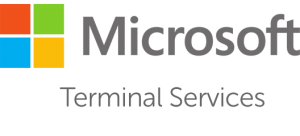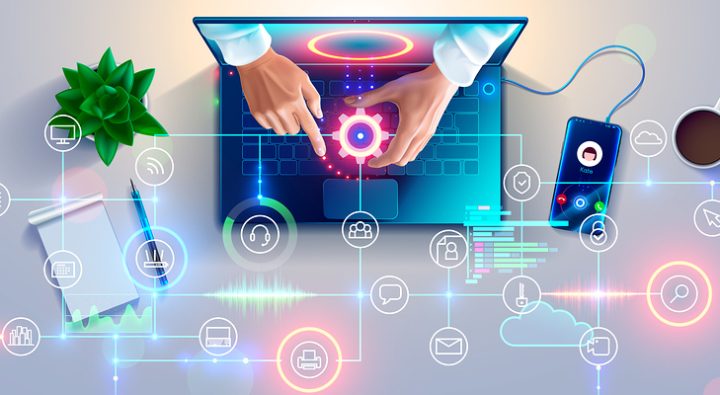This Pros and Cons of Terminal services list will help you understand if this is the right solution for your Business.

Terminal Services, now known as Remote Desktop Services in Windows Server, is one of the components of Microsoft Windows (both server and client versions) that allows a user to access applications and data on a remote computer over a network. Terminal Services is Microsoft’s implementation of thin-client terminal server computing, where Windows applications, or even the entire desktop of the computer running Terminal Services, are made accessible to a remote client machine. The client can either be a full-fledged computer, running any operating system as long as the terminal services protocol is supported, or a bare bones machine powerful enough to support the protocol. With terminal services, only the user interface of an application is presented at the client. Any input to it is redirected over the network to the server, where all application execution takes place.
For an enterprise, Terminal Services allows IT departments to install applications on a central server. For example, instead of deploying database or accounting software on all desktops, the applications can simply be installed on a server and remote users can log on and use them via the network. This centralization makes upgrading, troubleshooting, and software management much easier. As long as employees have Remote Desktop software, they will be able to use enterprise software. Terminal Services can also integrate with Windows authentication systems to prevent unauthorized users from accessing the applications or data.
Below are some Pros and Cons of using Terminal Services. It just may be a less-expensive answer to a growing need.
Pros of Terminal Services
- Access to systems from anywhere and anytime
With more mobility being the norm rather than the exception, business executives and employees need robust access to their contacts, calendars and documents regardless of where they are and what time it is. Terminal Services or Remote Desktop Services is an old, but great solution for today’s mobility requirements. Just like wide ties; keep them long enough and they’ll come back in fashion. So it is with Terminal Services. It’s enjoying a second look because of its overall simplicity and low cost.
2. Single point of maintenance
In a Terminal Services environment, applications are installed on a terminal server rather than on individual desktops. As a result, application updates become much easier because there is only one copy of each application. You no longer have to make sure that application-level patches are applied to every desktop in the organization. It is worth noting, though, that each desktop retains its own operating system, which must still be kept up to date.
3. Install once, use many
The Installation of applications only happens once and everyone receives the upgrade at the same time. Once an organization has adopted Terminal Services, desktops can be configured to run a minimal configuration. This makes the process of provisioning desktops a lot easier. Image files become smaller and can therefore be deployed much more quickly. The issue of application compatibility testing (at the desktop level) also goes away.
4. Reduced licenses expense
Businesses will see a reduction in application costs with concurrent licenses instead of per device licenses.
5. Solid Security
The network administrators can lockdown file and system access from a single point. Terminal Servers also vastly limit the ability for the remote sites to take data from an organization.
6. “Death to sneaker support”
With one location running the systems for all the sites there is no longer a need to be at each site for maintenance or support. In this way site support can occur instantaneously keeping users working when you need them most.
7. Power Savings with a juicy ROI
Businesses can see ongoing power savings with the use of Thin Clients (dummy terminals). Thin clients use 1/5 th the power required by a desktop or laptop. This one item alone—the investment in terminal server with thin client—typically pays for itself in 16 months just in the reduction of electricity bills.
8. More time on the job
Gone are snow days or other human resources challenges associated with absentee staff. Access and productivity are no longer issues as well. Users can pull up their desktop from home so personal matter need not impact your staff’s ability to continue where they left off at the office.
9. Per user monthly cost drops from $55 to $20
With the right outsourced IT provider, thin client costs drop to under $1 per day. Depending on the size of the company, the savings become very significant very quickly.
10. Hardware no longer an issue
When Terminal Services debuted with Windows NT, server hardware was hard-pressed to support multiple server sessions. Furthermore, 10 Mbps networks were still the standard at that time and could easily become saturated by network-intensive applications, such as Terminal Services. Today, server hardware is far more powerful than it has ever been, and running multiple operating system instances on a server is the norm. Today’s servers are well equipped to handle the demands of hosting Terminal Service sessions.
11. Desktop hardware has a longer lifespan
The economy has seen better days, and everyone is looking to make the most of their IT budget. By using Terminal Services, organizations can squeeze more life out of their desktop computers. Because all the processing occurs at the server end, the desktops are essentially acting as dumb terminals. This means that using existing desktop hardware remains a viable option for much longer than it would if applications were run locally. Likewise, running applications on a terminal server may allow organizations to purchase lower-end desktop hardware than they otherwise would, resulting in cost savings.
12. Desktop PCs have a smaller attack surface
Because Terminal Services involves applications or desktop sessions that are centrally hosted, there’s no need to install applications on individual desktops. This helps to reduce the attack surface (as in malware and viruses) of the desktops in your organization. Typically, the desktop computers will require an operating system, some antivirus software, and a Terminal Services client (which is included with Windows). Everything else can be run on the server.
Limitations of Terminal Services
1. Video playback limitations
Terminal Services is not meant to play HD video through the terminal. Though users can roughly watch a YouTube video, the video and audio are often not in sync
2. Peripheral support not supported
USB devices such as cameras and external storage are not supported. Ditto with USB memory stick.
3. Heavy graphics requirements not ideal
Terminal Services is not recommended for heavy graphic applications such as Adobe and AutoCAD as they are heavy on resource use. For these users standalone desktops are still the recommendation.
The Verdict
Terminal Services can be a huge improvement for any Business in terms of cost saving and productivity. The important thing is you should let it manage to a proper IT service provider company.
Our Story, Your Benefit
Regardless of whether you are a remote worker or an industry leader in charge of multiple teams, you need the right tools to build collaboration, enhance communication and maintain a dynamic company culture. Microsoft Teams and Office 365 provide a great place to start.
Since 2001, eMazzanti Technologies has supported companies bridging the distance gap. And as an international company with offices in multiple time zones, they have also utilized these same services. From innovative business cloud computing to multilayer security solutions designed to include remote workers, eMazzanti can help your organization stay connected and productive.







